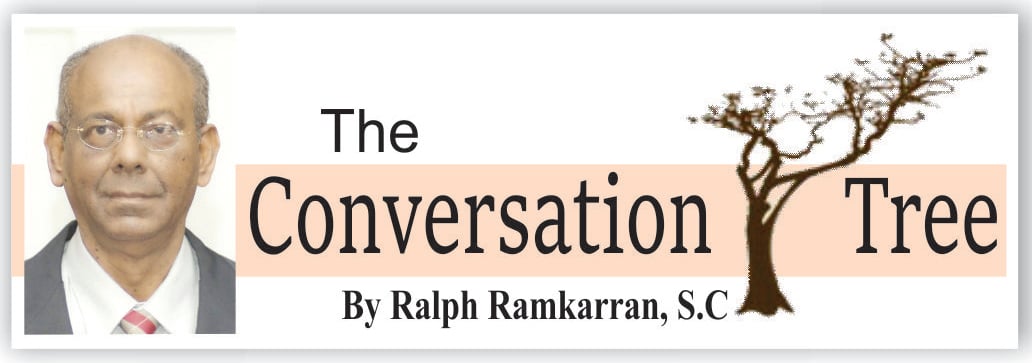Russia’s long-expected land, sea and air invasion of Ukraine on Thursday last is to be condemned. It occurred amidst speculation in the West that President Putin’s ambition is to restore the Russian or Soviet empire of the past. The narrative suggests that he is starting with Ukraine which he claims was always part of Russia and, such being the case, it is now incumbent on the West to do everything it can to stop Russia’s aggression, blackmail, bullyism and attack on democracy by an authoritarian oligarchy.
The ‘containment’ policy against the Soviet Union, devised by George Keenan, the American diplomat in 1946/1947, sought to apply pressure on the Soviet Union to contain it “by the adroit and vigilant application of counter-force at a series of constantly shifting geographical and political points.” The fall of the Soviet Union in 1991, the introduction of liberal democracy with free and fair elections and a market economy, albeit in the initial stages, attracted calls for the abolition of the Cold War military alliances, NATO and the Warsaw Pact.
With the USSR on its knees, losing it allies in Eastern Europe and its economy in shambles, it could not sustain the Warsaw Pact, which was dissolved. The US not only retained NATO, but extended it to former Warsaw Pact countries on the borders of Russia, over the latter’s continuous objections. One could be excused for asking the question: If NATO was, as alleged, a defensive military alliance to protect against potential Soviet aggression and ‘communism,’ and these threats and the Warsaw Pact no longer existed, why was it necessary to maintain NATO and even to extend it to the borders of Russia? Talk at the time of establishing an all-Europe defensive alliance, including Russia, got no traction. Instead, NATO’s expansion into Eastern Europe, sent the message to Russia that the policy of containment was alive and in full force.
There is no doubt that former Warsaw Pact countries felt intimidated by the former Soviet Union and that may have driven their applications for NATO membership. After all, the record of intimidation by the USSR would have been within their recent experience. Hungary was invaded in 1956 and Czechoslovakia in 1968, in both cases to stop popular uprisings.
The one surviving superpower, the United States, had the opportunity and obligation to influence the re-ordering of the security system of Europe after 1991 so that countries felt secure from both intimidation and containment. The US dropped the ball, and the consequences are being felt today, including a closer alignment between China and Russia, depriving the US of its strategic political and military victory fifty years ago over the USSR, by its recognition of and close relations with China.
Ukraine’s location at Russia’s back door ought to have influenced its military and defence policies based upon geographic reality, just as Finland did. A neighbour of Russia, Finland never joined NATO. Some US voices occasionally penetrate the fog of propaganda, such as Senator Bernie Sanders, giving validation to Russia’s security concerns, while condemning Russia’s aggression. Russia’s complaint has always been Ukraine’s application for NATO’s membership and more recently, which resulted in the crisis at this time, Ukraine’s lethal military build-up with US and European aid.
Russia has no right to intimidate Ukraine and to invade its territory, which violates international law. I support Guyana’s condemnation of the invasion and the call on Russia to withdraw its forces and end the war. Having said this, knowing that an invasion was imminent, knowing of the complaints by Russia about being surrounded by NATO, knowing its opposition to Georgia’s and Ukraine’s joining of NATO as threats to its security, experiencing Russia’s invasion of Georgia in 2008 to prevent it joining NATO, witnessing Russia’s annexation of Crimea and support of Ukrainian separatists in 2014, knowing the Soviet Union’s loss of 27 million lives within living memory in the Second World War, it is very difficult to understand the blunt refusal to accommodate any kind of concession to Russia’s security concerns in relation to Ukraine’s joining of NATO.
The US was prepared to go to war over the USSR’s placement of missiles in Cuba in 1962. The USSR’s action was a response to the US’s installation of missiles in Turkey. The USSR agreed to remove its missiles from Cuba after the US agreed to do the same in Turkey. The danger of one nuclear power challenging the security of another by arming a neighbour of that other was then recognised. The US and NATO are today closer to the borders of Russia than they were during the Cold War.
Russia might have been prepared to accept a treaty of neutrality, keeping Ukraine out of NATO, which could have included formal guarantees of Ukraine’s borders by Russia and other countries. According to the Russian Foreign Minister, the new offer of Ukraine’s neutrality by President Zelensky, was rejected by Ukraine when suggested by President Macron. The fear of feeding the Russian beast, or appeasement of Russia, or Ukraine’s insecurities, probably drove the West’s and Ukraine’s positions. But wasn’t protecting Ukraine’s democracy, sovereignty and territorial integrity from Russia by a treaty of neutrality preferable to the predictable destruction of Ukraine by Russia, however wrong and reckless?
This column is reproduced, with permission, from Ralph Ramkarran’s blog, www.conversationtree.gy





